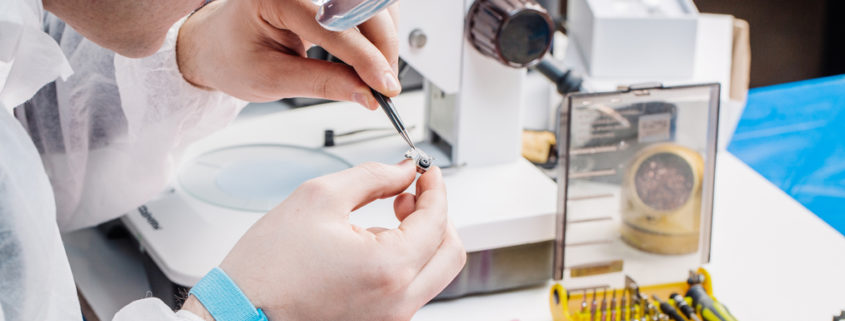Sensor ASICs in the Automotive Industry
The automotive industry has been a major consumer of electronics technology since the late 1960s. And as technology progresses, the demand for hybrid automobiles and electric cars is also growing.
To address these demands, the automotive industry must work hand-in-hand with electronics technology.
Over the years, car manufacturers have relied on electronics for entertainment. But with the advent of technology, car manufacturers are gearing towards building electric cars and the use of electronic systems for better efficiency and safety.
Electronic contents of vehicles and automobiles may increase in the coming years.
Automobiles in the coming years are expected to be more sophisticated. Eventually, every function of the automobile will be through sensor ASICs. Smart cars and driverless cars will rely on sensor ASIC for position control, timing control, speed control, and others.
Battery monitoring, pressure sensor, gas sensor, engine monitoring, and more require specialized sensor ASIC.
Automobile companies across the world are investing in electronics and specific applications in the vehicle system. Leading automobile manufacturers are gearing towards producing cars that are smarter and safer with the help of automobile ASIC applications.
Today, hybrid cars are now able to park themselves, brake when they sense danger, stay in a lane, free themselves from a tight parking area, and provide a 360-degree view of its surrounding.
With these developments, sensor ASIC is expected to be in demand in the automotive industry. And with the combination of these smart sensors, GPS, and radar, it is not possible that drivers in the future will just have to hit the start button, steer it, and switch if off once in their destinations.
Sensor ASIC for automobiles should have these three (3) major components:
- Safety – it is one of the utmost important aspects of the development of advanced driver assistance systems. ASICs must adhere to ISO 26262 requirements, safety verification, safety goals, and safety SOC architecture.
- Reliability – pertains to the lifecycle of the SOC, wear outs, mortality, life span, and aging.
- Quality – relates to the condition of the foundry process, defect density, and thermal fatigue.
Samples of automotive ASIC applications:
- Electronic Odometer with LCD Driver – a custom ASIC for automotive and electric automobile applications. Some of the features include a record of miles or hours which is stored in nonvolatile memory (EEPROM). The data is retained even if the power is lost. It also has 7 digit LCD driver and ratiometric sensors.
- Engine Monitor and Warning light controller – the device is designed to monitor engine perimeters like pressure, voltage, and temperature. The monitor also activates the warning light is the parameters are out of range. The sensor ASIC is intended for the automotive instrument cluster.
- Digital Pulse Width Modulator
Some of the types of sensors used in an automobile:
- Oxygen sensor
- Coolant sensor
- Voltage sensor
- Fuel temperature sensor
- Mass airflow sensor
- Engine speed sensor
- Spark knock sensor
- MAF or Manifold Absolute Pressure sensor
With all these automobile sensors, driving in the future is safer and convenient. In the coming years, it will simply involve turning the engine on/off and steering it to your destination.
Linear MicroSystems, Inc. is proud to offer its services worldwide as well as the surrounding areas and cities around our Headquarters in Irvine, CA: Mission Viejo, Laguna Niguel, Huntington Beach, Santa Ana, Fountain Valley, Anaheim, Orange County, Fullerton, and Los Angeles.






